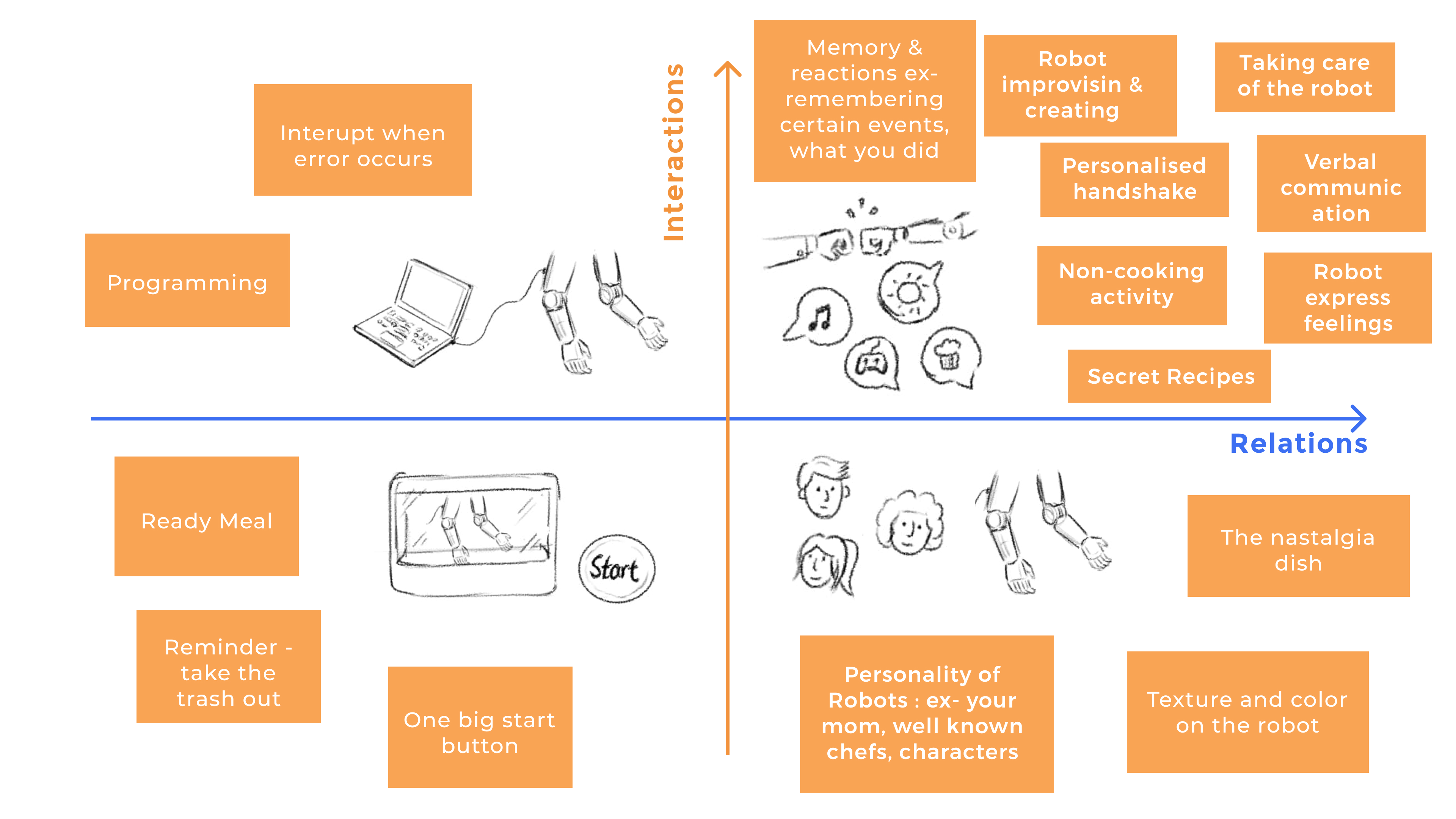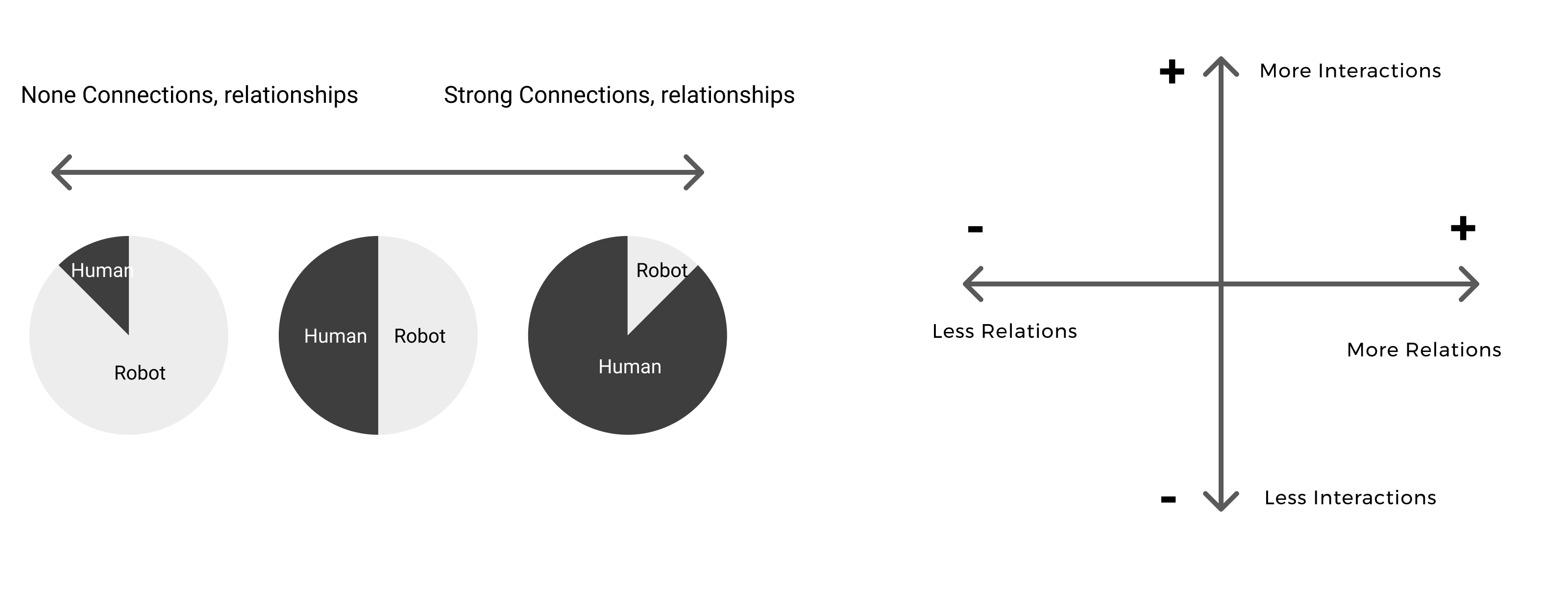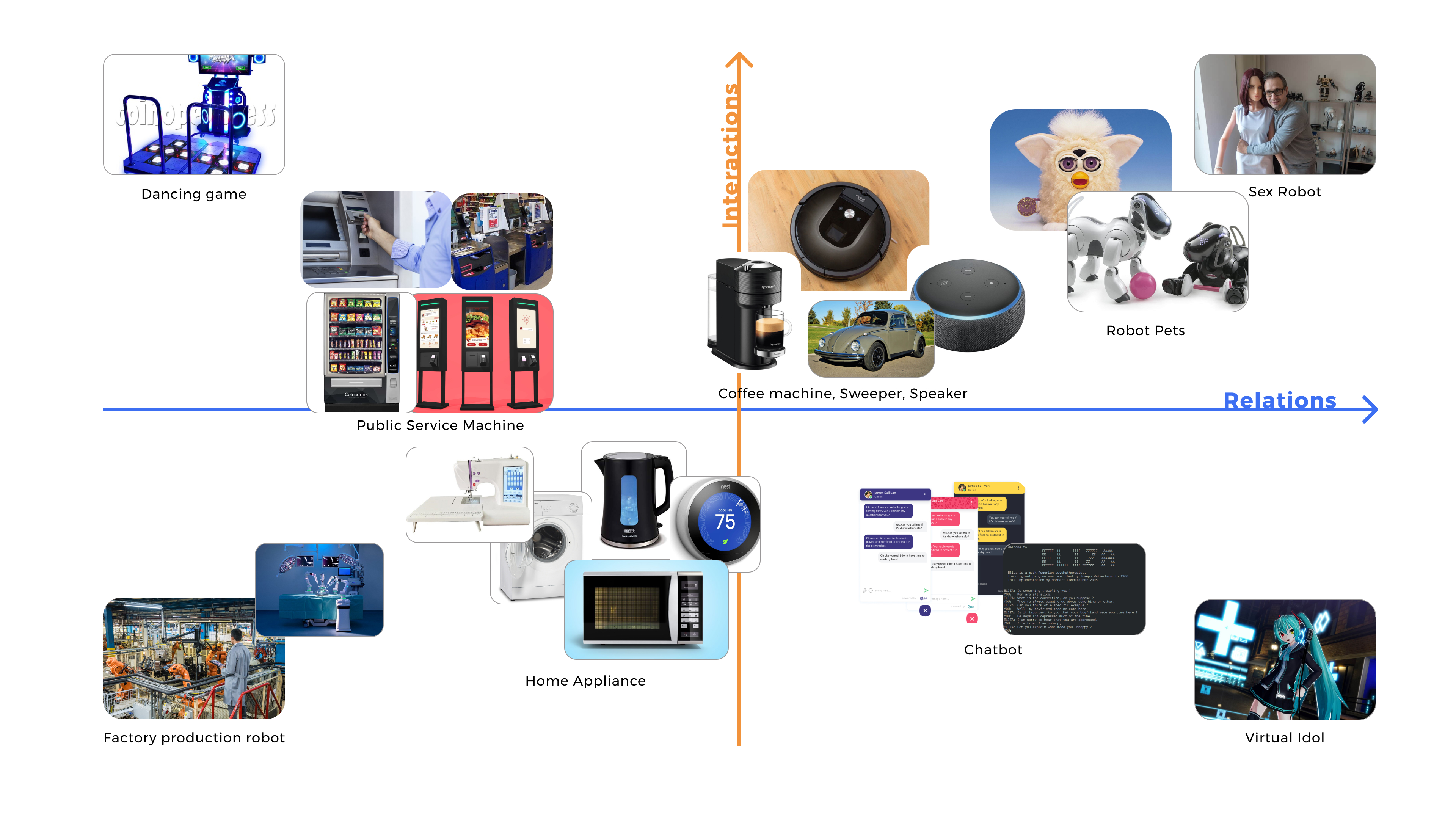Interaction Relation Matrix
Micro UX - Week 5

Brief: Design the social relations and interactions between a robot chef and its human guests.
External Partner: Moley Robotics
Team: Tiana, Ana, Sanjana, Sylvester
The previous four weeks’ discursive research and role-play makes us feel both excited and somewhat aimless, especially when we pile up all the footage and have more than ten robot actor/actress. We have explored collaboration, semiotic gestures and emotion therapy but keep changing topics. It is time to sit down and be specific about the desired outcome. During the tutorial, John and Al mentioned a new perspective for us: the design outcome can be a research methodology for examining human-robot interactions and apply to other robot industries.
Crazy 8s’ in Matrix
Looking at the previous experiment, it is noteworthy that the interaction frequency between human and robot is different. Therefore, organising them by a scale could help us develop a systematic analysis framework. We first had a quick meeting addressing how we should set the scale but soon stuck in its naming. Emotion doesn’t fit in fixed ranking, and interactions and relations are connected but not positively correlated. So what not make it a matrix and examine both?

Later, we took advice from the feedback, took a step back, and looked at all the existing machines and robots. The aim is to try and adjust the matrix and align similar interactive patterns for Moley Robot. I found brainstorming the extreme cases intriguing.
- Low interaction, low relation: a production line feel fully autonomous and disconnected.
- High interaction, low relation: a slot machine is designed to be addictive but not related to individuals since everyone can use it.
- High interaction, high relation: sex robot and robot pet carry strong social functions and indicate ownership
- Low interaction, high relation: a virtual idol is strongly related to fans with any direct contact

Introducing modes in cooking
Holding the inspiration from analysing all these machines, we started brainstorming how it applies to the cooking robot. Each group member had contributed fantastic features, which overlap or shows similarities in some case. We then synthesised highlighted features and turned them into four modes:
- A press-and-start robot with a curtain in front and fully automated
- Human programs the robot with recipes to control it
- Introduce personalities to the robot and make the cooking as a show. The food depends on a specific character.
- The robot becomes your friend and chat, play games with the human with deep context understanding.
Then we had Sebastian as our human guest and participate in the role-play with Sanjana acted as the robot.

Feedback and Reflection
Sebastian mentioned feeling more connections for the role-play when the robot asks about friends, daily life, music, or other personal interests. He preferred voice interactions rather than screens in terms of interacting with the robot. More guidance and detailed context are beneficial for further experiment.
In speed-dating on Thursday, we received serval helpful feedback from other groups. Some are interested in multiple human guest scenario, and mentioned that the more routine, balanced scenes are missing in this grid. The most asked question is why are we doing this and what is the desired outcome. Unfortunately, we did not have a clear view of the research method yet to communicate it thoroughly.
Our tutors sensed the basic structure of the research framework by the two axes. But to deliver a convincing method, a higher resolution work should be included in each quadrant. They also gave a lot of suggestions on how to produce higher quality videos.
👉🏻 See next week: Duo Dials